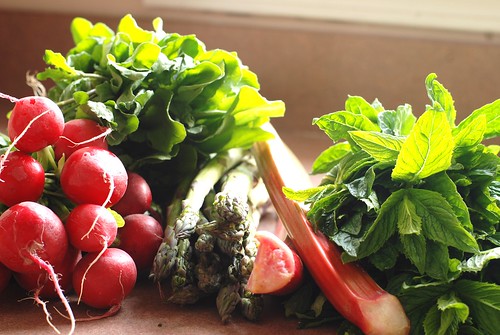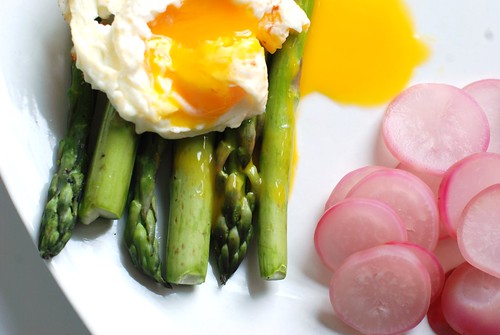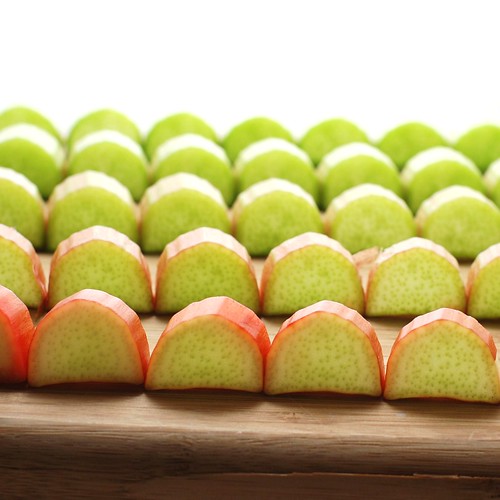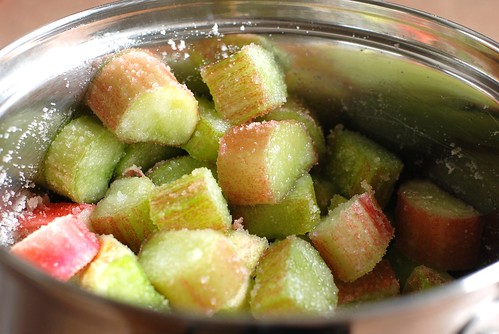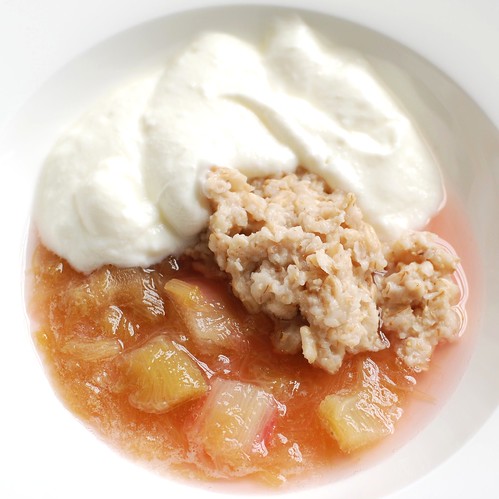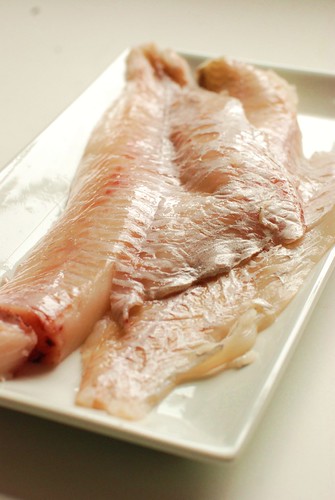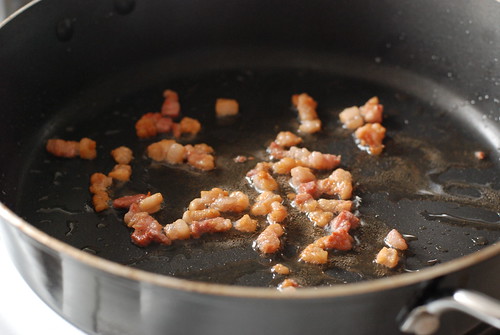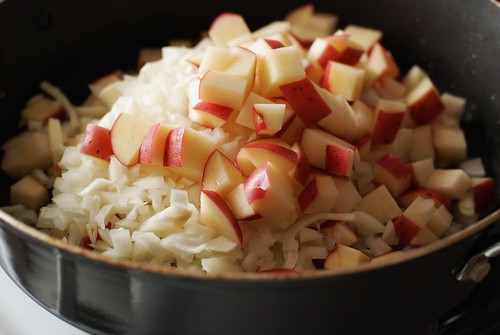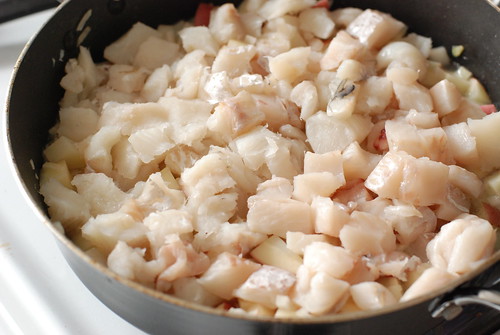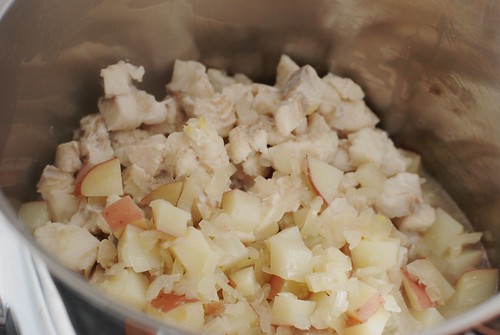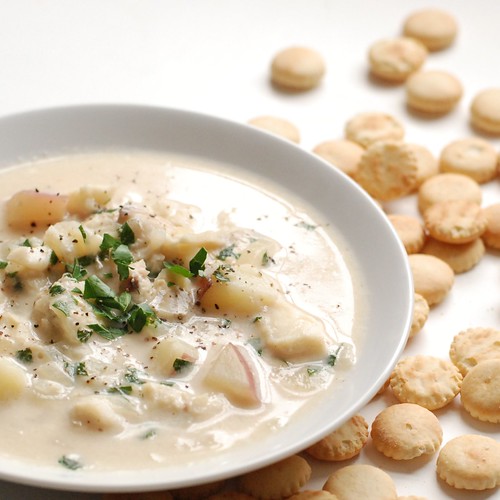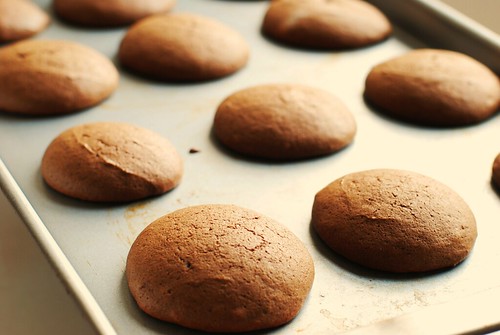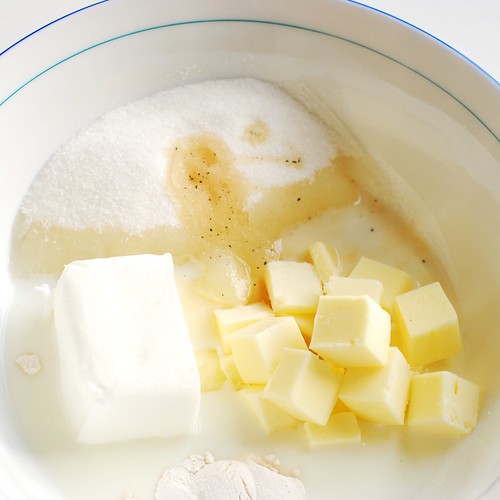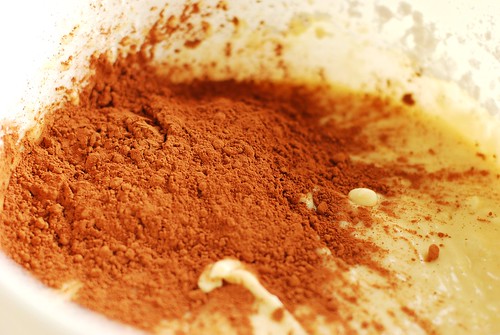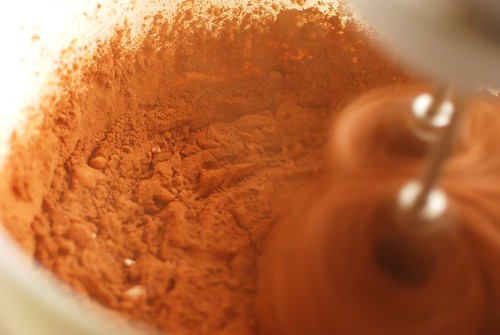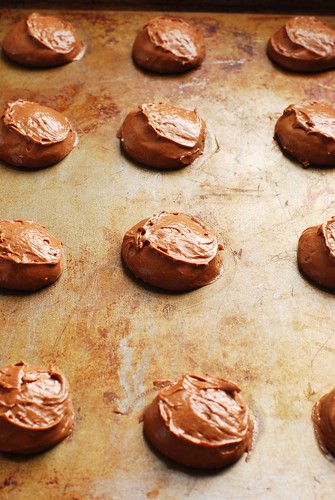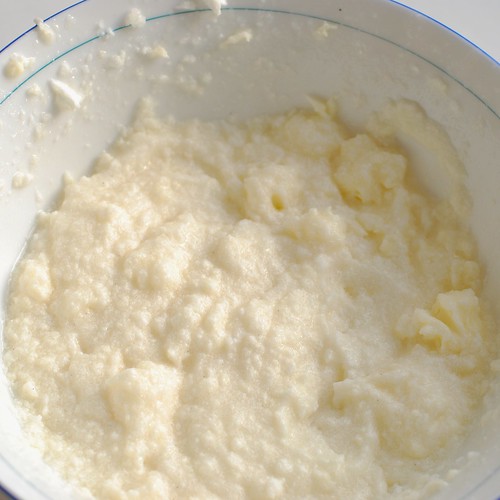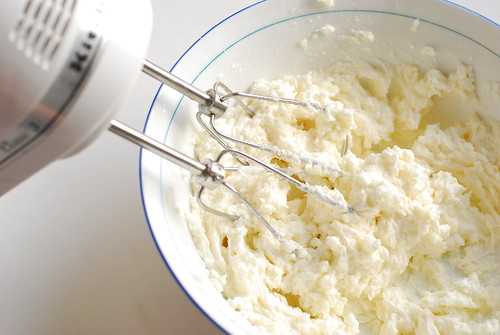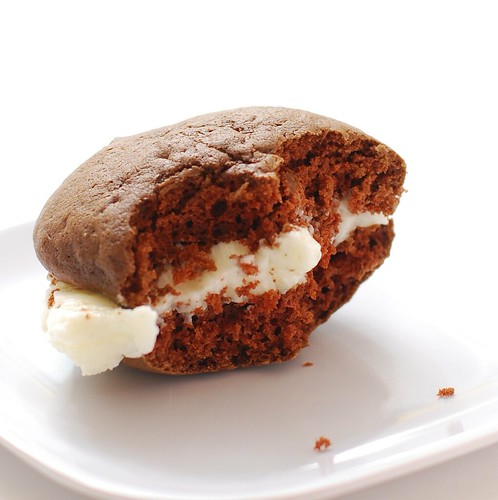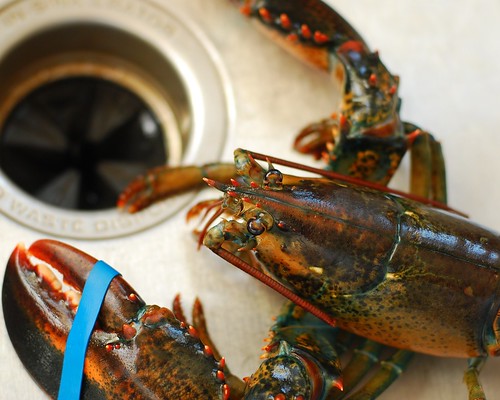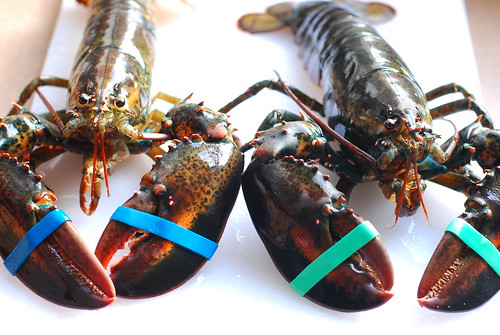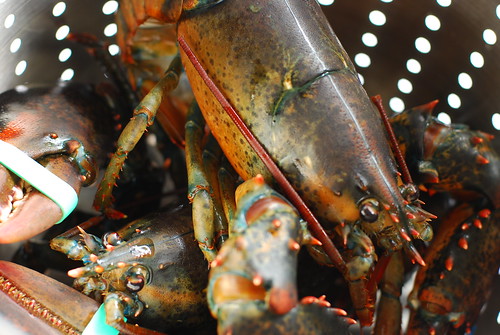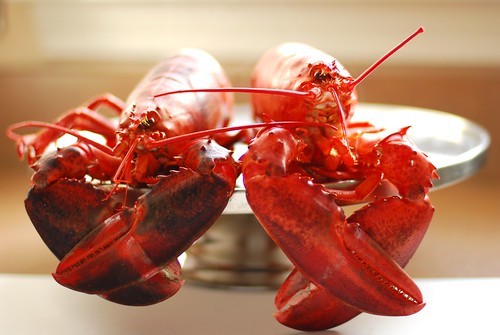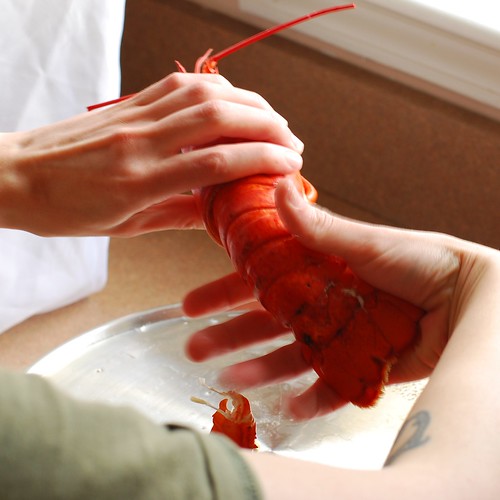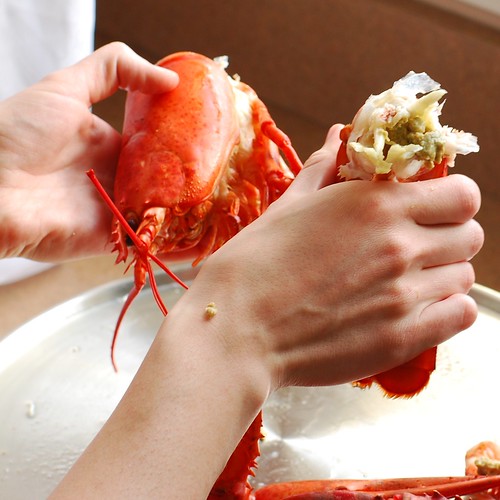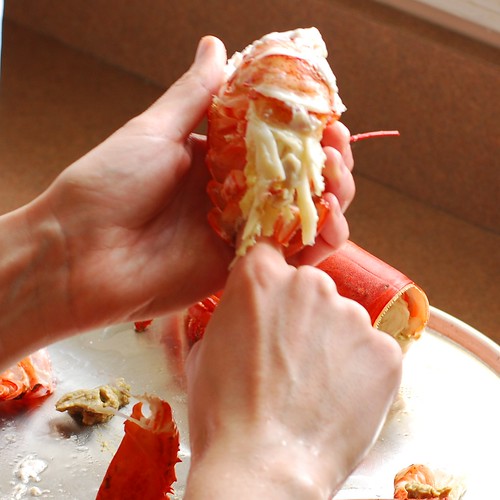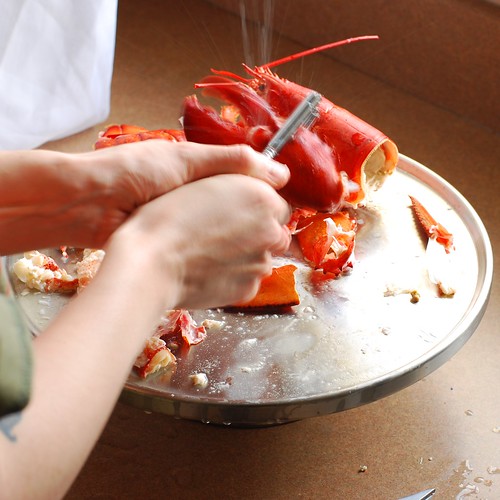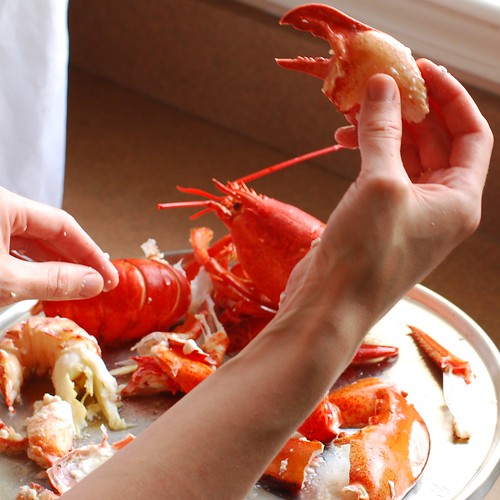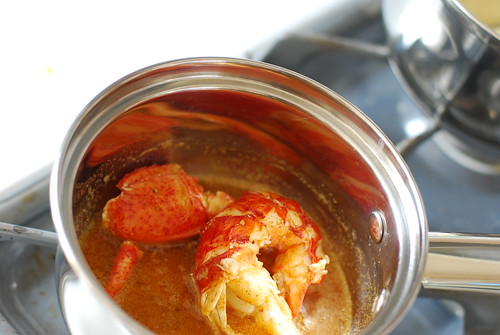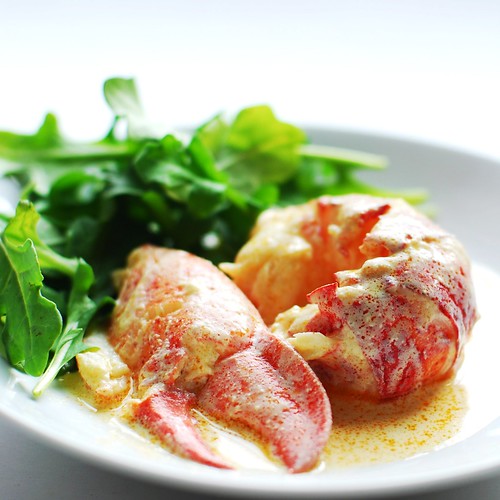recipe: healthy rhubarb-parfait-cobbler-type-thing
So it would appear that the rest of the country has easy access to local produce for more than 3 months of the year. Must be nice, assholes.
Okay, I lied, nobody’s an asshole, I’m just super jealous. I was raised in the classic suburban white girl tradition of New Hampshire. And to us, the concept of vegetable seasonality was . . . simplistic. We had corn on the cob once a year, my mom made zucchini breads in August (and froze about a dozen), we went apple picking in September and in October we’d choose a pumpkin to carve as a family. The rest of the year we enjoyed carrots, potatoes, apples, oranges and frozen vegetables. My mom and dad will no doubt read this and lay the guilt on how I make them sound like SUCH bad parents who never fed their kids ANY vegetables, which is not the case, the point here is that seasonality just never stuck with me.
So last year it occurred to me that maybe corn doesn’t get harvested on a single day of the year, and also, what is that day anyway, and hey, plants *do* grow in Massachusetts, so logic would dictate that some of them are edible, right? Perhaps this . . . what do you call it . . . agriculture? thing?? had made its way from the Midwest to our humble corner of the country? This must make me sound horrifically stupid, but really, I’d never seen a well-stocked farmer’s market (they have terrible hours around here, like middle-of-the-afternoon-on-a-Wednesday hours), and the most local veggies I’d seen were singly sold on the side of the road. After much searching, I found Berberian’s Farm in Northborough (no site, no link) and caught up with everyone else that the freshest food is local and that fresh really does make a difference.
This summer I’d like to document an answer to the question that popped up for me only last year: so what’s in season?
On May 13th, it was this junk:
(I do use the term “junk” loosely) We’re looking at radishes, arugula, asparagus, rhubarb and mint.
Needless to say, I did try to think of some clever recipe using only these ingredients, but you know, they really just don’t go together very well, and what’s more, the way I eat them isn’t very interesting. For example, I steamed the radish.
And while its Barbie appeal was heightened significantly, it didn’t taste like much of anything other than maybe overboiled summer squash, so I salted and peppered and ate it on the side with this.
And you can see how I couldn’t in good faith make an entire blog post about this because it’s like cheating . . . wait, what’s that, Bitten Word? Martha had a recipe for poached eggs on asparagus? Wow, either I’m next in line to wear that lady’s heavy crown, or she’s out of actual recipes, because “place poached egg upon steamed asparagus” is not exactly what I would describe as a “recipe” so much as “an idea I came up with on the fly and I’m sure I’m not the first.”
Still, it was really good. Recipe: toss your ‘spargus with 1 tsp olive oil, roast at 500o for 5 minutes while you fry an egg, then salt & pepper & sprinkle with lemon juice if desired and place the egg on top. The end.
Alright, so I did manage to get these big ole honkin rhubarbs though, and I did manage to come up with a recipe for them, and it’s not even strawberry-related! I know, I’m so original, right? First though, check out how huge they were!
The length of my arm, they were! This was the only way I could think to fit them in my lens, as it does not zoom and I’m sick of that overdone depth-of-field bullshit. Anyway, then I chopped ’em up.
Add a healthy dose of sugar because these things are as sour as lemons.
Then stew them for a few moments, make some oatmeal, and enjoy as follows. This makes an excellent breakfast or dessert, complete with vegetable, protein, and fiber. There’s no fat unless you want to add some, it’s easy to make vegan with some yogurt substitution action, and even if you don’t give a shit about any of that diet stuff, you will still like it. The rhubarb tastes just like pink lemonade, there’s just enough oatmeal to make it feel like a real dessert and the yogurt offers a neutral contrast in flavour and texture. I have to say, it far exceeded my vision!
Â
Â
Healthy Rhubarb-Parfait-Cobbler-Type-Thing
This dessert (or breakfast) has a rosy blush that can aid a young lady in her pursuit to maintain her girlish figure. In other words, it looks nice and ain’t bad for ya!
2.5 c (about 1/2 lb or 4-5 feet) rhubarb stalks
1/2 c sugar
1/2 c dry oatmeal
3/4 c water
1 c yogurt (fat-free, Greek, full-fat, your pick!)
1/2 tsp sugar (in addition to the sugar above)
1/2 tsp vanilla extract
Rinse the rhubarb, then chop into 1/2″ chunks. Toss with 1/2 c sugar. This is easiest to do in the saucepan you’ll be cooking in—lid it then swirl it around til the chunks are coated. Heat over medium-low heat, stirring every minute or so. You’ll notice that even though you started with no extra water in the pot, suddenly all the rhubarb surrenders its water and you’ll have a kind of stew. Whenever you stir, give one of the chunks a fork to see if it’s tender; as soon as that happens, turn off the heat. It should happen within ten minute or so (if not, try medium heat for a little while, but keep an eye out for burnt bottoms!).
While that’s cooking, prepare the oatmeal. I microwaved mine because um, the stove was kind of already taken. 1/2 c oatmeal to 3/4 water. The oatmeal package will say otherwise; tell it to take a hike. Microwave 2.5 minutes.
Also, mix the yogurt with the vanilla and remaining sugar.
To assemble, we’re really just dividing everything into rough fours: 1/4 c rhubarb, top with a generous tablespoon of the oatmeal, then finish off with 1/4 c yogurt.
Â
Â
nutrition summary (for 1 serving of 4): 185 calories, 1g fat, 2g fiber; about 3 weight watchers points



